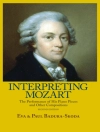Film Criticism, the Cold War, and the Blacklist examines the long-term reception of several key American films released during the postwar period, focusing on the two main critical lenses used in the interpretation of these films: propaganda and allegory. Produced in response to the hearings held by the House Committee on Un-American Activities (HUAC) that resulted in the Hollywood blacklist, these films’ ideological message and rhetorical effectiveness was often muddled by the inherent difficulties in dramatizing villains defined by their thoughts and belief systems rather than their actions. Whereas anti-Communist propaganda films offered explicit political exhortation, allegory was the preferred vehicle for veiled or hidden political comment in many police procedurals, historical films, Westerns, and science fiction films. Jeff Smith examines the way that particular heuristics, such as the mental availability of exemplars and the effects of framing, have encouraged critics to match filmic elements to contemporaneous historical events, persons, and policies. In charting the development of these particular readings, Film Criticism, the Cold War, and the Blacklist features case studies of many canonical Cold War titles, including The Red Menace, On the Waterfront, The Robe, High Noon, and Invasion of the Body Snatchers.
Innehållsförteckning
List of Illustrations
List of Tables
Acknowledgments
Introduction: What More Can Be Said about the Hollywood Blacklist?
1. A Bifocal View of Hollywood during the Blacklist Period: Film as Propaganda and Allegory
2. I Was a Communist for RKO: Hollywood Anti-Communism and the Problem of Representing Political Beliefs
3. Reds and Blacks: Representing Race in Anti-Communist Films
4. Stoolies, Cheese-Eaters, and Tie Sellers: Genre, Allegory, and the HUAC Informer
5. The Cross and the Sickle: Allegorical Representations of the Blacklist in Historical Films
6. Roaming the Plains along the ’New Frontier’: The Western as Allegory of the Blacklist and the Cold War
7. Loving the Alien: Science Fiction Cinema as Cold War Allegory
Conclusion: Old Wounds and the Texas Sharpshooter
Notes
Bibliography
Index
Om författaren
Jeff Smith is Professor of Communication Arts at the University of Wisconsin at Madison, and the author of The Sounds of Commerce: Marketing Popular Film Music.












